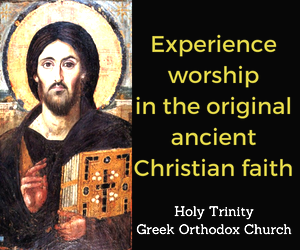
“Too many children are dying. Too many children. We must do something!” warned former Representative Gabrielle Giffords during a Senate Judiciary Committee hearing to curb gun violence. Recovering from a horrific mass shooting herself, the former Arizona Congresswoman asked her former colleagues to take meaningful steps to end gun related tragedies. Despite the tragic events that unfolded in Newtown, I would be lying if I did not admit, at first, that I was not the least bit surprised or shaken by the story, given that in my 23 years on earth, I have been exposed to countless acts of senseless violence. Regrettably, these events are normative and so are their systemic roots.
However, these acts of gruesome violence are not reserved for the most egregious individuals. They are carried out in video games like Call of Duty, Grand Theft Auto, Halo, Assassins Creed, and Gears of War. They are lived out in Academy Award winning movies and Saturday morning cartoons. They are imagined in novels or played out on Broadway. They are glorified in the Super Bowl and in the octagon of an MMA fight. In fact, wherever the eye wanders in American society it is sure to see some sort of violent image.
So what differentiates the depicted violence played out in our video games, movies, TV shows and sporting events from the horror that took place in Newtown? What can be done to stop this incessant commitment to ferocity and how do we overcome this cycle that has made millennials, like myself, stolid in the face of pure unavailing violence?
In my belief, we all share, contribute to, promote the American belief that violence can be redemptive. We continually cling to the hope that violence will restore justice. This worldview is crafted by powerful social forces and embedded into our psyche. Television, radio, advertisements, print, political rhetoric, and a host of other social forces inundate us with the newest “threat” to our American way of life. Whether it’s the murderer, the rapist, the Muslim, or the homosexual, our culture seems almost predisposed to flush out those who are different and use violence to beat down their harmful impact on our society. As a result, we draw a figurative line in the sand that separates us into two groups: good and evil.
However, this dichotomy between good and evil is nothing more than a thinly veiled excuse to justify our “virtuous” and “good” violence and demonize the other’s “wicked” and “unspeakable” violence. We are bred into this cycle that tells us our violence is redemptive and righteous. Starting at a malleable age, we are exposed to cartoons where the oppressive violence of the super-villain overtakes the city, but in the closing minutes, the beaten, battered, and bruised hero swoops in and overpowers the twisted villain to restore justice. As this idea of redemptive violence becomes normative, we begin to participate passively in its continuance by joining sports teams that praise monstrous hits and crushing blows. Finally, once we are numb to the hurtful nature of this cycle, we actively seek confrontation as the primary means to resolve disputes and personal hurt.
This cycle of redemptive violence, which tells us that violence can only be overcome by violence, is an indiscriminate and perpetual force that affects every realm of American life. Indeed, physical violence is only one of several violent modes. For example, rhetorical violence, whether it’s explicit hate-speech or a glib joke, has pushed suicide to the third leading cause of death for those aged 15 to 24. Ideological violence, used to narrowly define those who are different from us, has led to a resurgence of divisive hate groups and terrorist factions.
I have come to realize that the only way to overcome the myth of redemptive violence is to confront those who tout its effectiveness and challenge the rationale behind their convictions. Jesus, while giving his Sermon on the Mount, encouraged his listeners to, “not resist an evil person. If someone strikes you on the right cheek, turn to him the other also.” This confrontation is a plea and stand for individual dignity and respect. In the same way, we can approach the cycle of violence, and it’s proponents with the rationale of love and hope. What took place in the halls and classrooms of Sandy Hook Elementary is not an isolated incident. It is reflective of our imperialistic history and our adherence to a system that purports violence as a virtue; thus, it is time to divest in the notion that violence and virtue can be synonymous.
This reflection is in no way a condemnatory diatribe on American beliefs. Regrettably, the myth of redemptive violence is not solely an American creation, but can be seen throughout the brief history of human civilization. However, this is a constructive reflection on what we place our hope in as American citizens. Do we place our hope in the promise of the cross, or the cross hairs of a gun? Do we accept the hope that comes with radical forgiveness of our enemies, or in scapegoat tactics to rid ourselves of “social evils?”
The outpouring of sorrowful prayer and sincere remarks was remarkable following the Newtown tragedy, but a heavy heart and kind words falls short of forgiveness and life-giving grace. One way to change this cycle of violence is to take the life of Jesus and impress it to our hearts. As a sincere exercise in non-violence, to illuminate the reality of Jesus Christ, we must add a prayer for our enemy, the other, Adam Lanza.
However, why stop there? We should also pray for the entire system of redemptive violence. Pray for its redemption so that we may transform this canard which has left us beaten and in constant search for answers. Yet, even more importantly, we must begin to act as the hands and feet of God in order to establish an alternative to the system of redemptive violence. This begins by overcoming our fear of the “other” and forfeiting our peace of mind; trading our might in exchange for humility and justice.
Our greatest fear as a nation is loss of control — to live without the power and violence that rid us of social “evils.” It seems impossible that we might attain peace through peace and we may not have to fear those who are different from us. However, the life of Jesus proposes an alternative reality; one that gives us hopes of an alternative system to redemptive violence.
Christian martyr and prominent theologian Dietrich Bonheoffer maintained, “if we are to find God, we have to look for God where God has gone ahead of us.” The one who precedes us, Jesus Christ, continually led us into the margins of society where there is no source of social, political, economic, or physical strength. In the margins, strength and hope are not drawn from the weapon on our hip, or the power in our punch. Rather, strength and hope are found in the radical grace of Jesus Christ.
Daniel Nealon is a recent graduate of political science and history at Hastings College in Hastings, Nebraska and will be attending seminary in the fall of 2013.






